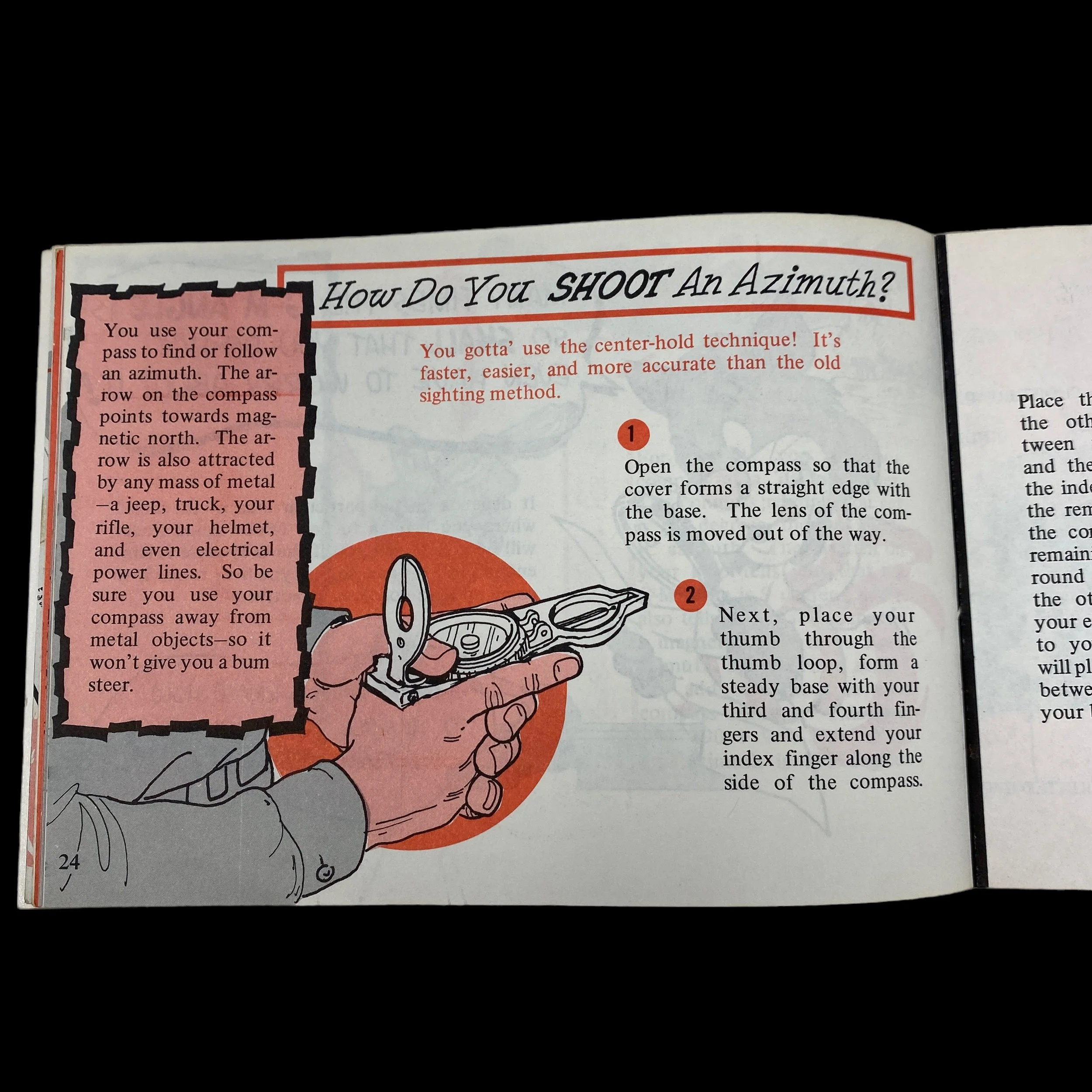Vietnam War "Don't Get Lost" 1973 U.S. Army Engineer School Illustrated Training Manual (Compass & Maps)































Vietnam War "Don't Get Lost" 1973 U.S. Army Engineer School Illustrated Training Manual (Compass & Maps)
Comes
During the Vietnam War, the ability to navigate effectively through unfamiliar and hostile terrain was of paramount importance for American soldiers. To aid in this endeavor, the US Army Engineer School at Fort Belvoir, Virginia, developed a crucial training manual in 1973 titled "Don't Get Lost." This manual focused on equipping soldiers with the skills necessary to utilize compasses and maps for successful navigation. To understand the significance of this manual, we must delve into the events that transpired during the Vietnam War in 1973 and analyze the reasons why training soldiers in navigation was essential.
The 1973 "Don't Get Lost" training manual provided comprehensive guidance on the use of compasses and maps. It covered topics such as map reading, orienting the map, interpreting symbols, understanding contour lines, estimating distances, and calculating azimuths. Additionally, the manual emphasized the importance of constant situational awareness, maintaining a reference point, and keeping an accurate pace count.
The manual also addressed specific challenges unique to the Vietnam War, including combating the magnetic interference caused by the dense vegetation and understanding local terrain features prevalent in the conflict zone. It educated soldiers about different compass techniques and their applications under various circumstances.
The Vietnam War in 1973 By 1973, the Vietnam War had already been ongoing for nearly a decade. This period marked a crucial turning point as the United States, faced with growing opposition domestically, sought to withdraw its forces from Vietnam. The Paris Peace Accords were signed on January 27, 1973, signaling a ceasefire between the United States and North Vietnam. This agreement aimed to deescalate the conflict and facilitate the withdrawal of American troops from Vietnam. However, the situation on the ground remained complex and volatile.
Importance of Navigation Skills in Vietnam:
Hostile Terrain: Vietnam's dense jungles, vast swamps, and challenging landscapes posed significant obstacles to American soldiers. Navigating through these terrains demanded a keen understanding of topography, especially in regions where conventional infrastructure was scarce or destroyed by war.
Guerrilla Warfare Tactics: The Viet Cong and North Vietnamese Army were adept at employing guerilla warfare strategies, which often involved ambushes and hit-and-run tactics. Effective navigation allowed soldiers to mitigate the risk of ambushes and counter these tactics by outmaneuvering the enemy.
Limited Technology: Unlike modern-day military operations with GPS and advanced navigational systems, soldiers in the Vietnam War relied on compasses and maps for orientation. The "Don't Get Lost" manual, therefore, became an invaluable resource for soldiers to navigate independently and maintain situational awareness amidst the absence of sophisticated technology.
Effective Planning and Coordination: Successful military operations required intricate planning and coordination among different units. Understanding and utilizing compasses and maps enabled soldiers to communicate precise locations, identify potential operational zones, and devise strategic approaches, enhancing the overall effectiveness of the mission.
Emergency Situations: In hostile environments, soldiers often found themselves isolated or cut off from their units. Knowing how to navigate using a compass and map allowed them to find their way back to safety, locate friendly forces, or reach designated extraction points during emergency situations.
The Vietnam War "Don't Get Lost" training manual of 1973 emerged as a crucial tool for American soldiers operating in a challenging and unforgiving environment. By equipping soldiers with the necessary skills to navigate using compasses and maps, the manual played a vital role in enhancing the operational efficiency, safety, and survivability of troops during the war. The ability to navigate through hostile terrains autonomously allowed soldiers to adapt to